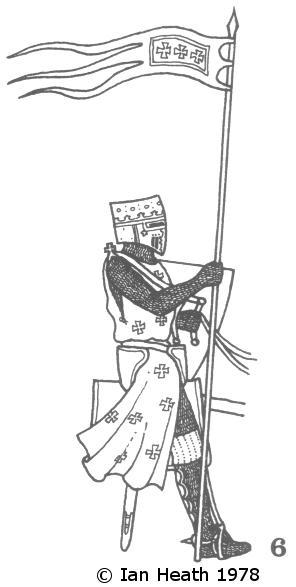
Create an Amazon Business Account
FRANKISH KNIGHT c. 1250
An extract from Armies and Enemies of the Crusades 1096-1291by Ian Heath
[See similar costume in Histoire d’Outremer par Guillaume de Tyr, Northern France, between 1232 and 1261]



6. FRANKISH KNIGHT c. 1250
By 1230 the helmet type depicted in 5a had evolved into the barrel-helm (the casque or heaume) depicted here, padded on the inside and with eye-slits and breathing holes pierced in the mask. A quilted head-defence, the arming cap, was usually worn under the coif from c. 1200 onwards.
Other differences from the last figure are the addition of surcoat and cuisses. The former was most probably adopted in imitation of Saracen dress, possibly as early as c. 1127 when a knight is recorded by Usamah ibn-Munqidh to have worn a long, sleeved green and yellow silk coat over his armour. Its use was probably far more widespread in Outremer than in Europe, where it was not widely worn until the early-13th century. It was usually sleeveless and at first plain in colour, but after the introduction of heraldry it often displayed the wearer’s heraldic device. In this particular instance the surcoat, as well as the lance pennon, displays crosses. The upstanding cross at each shoulder may indicate he is wearing some form of reinforced leather cuirie or iron breastplate under the surcoat.
Cuisses were quilted tubes worn over the thighs as additional protection. They first appear c. 1220 and are common thereafter.